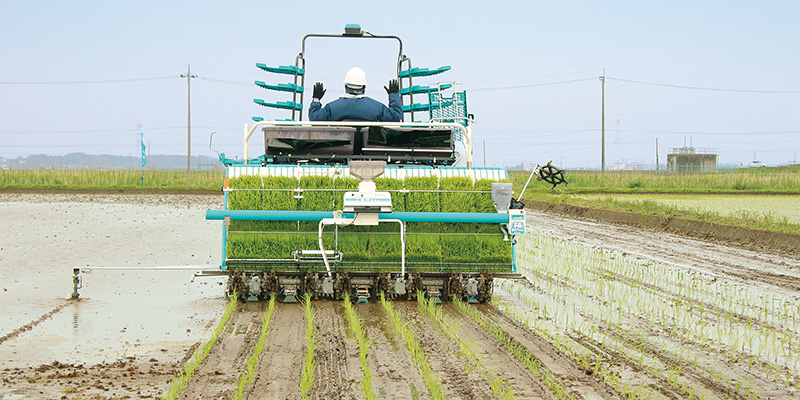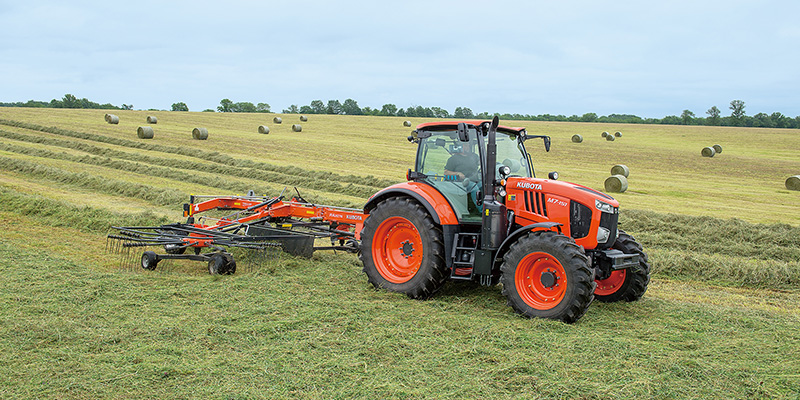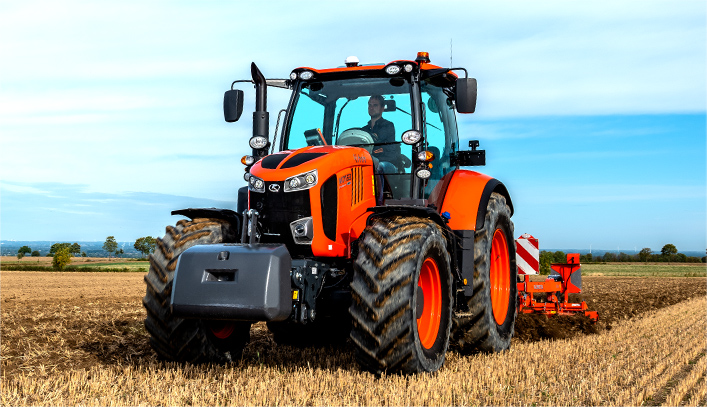02
Precision Farming According to Kubota
Putting smart farming into practice

Creating new values through innovative solutions to support farm management by utilizing data and automating farming machinery

Director and Senior Managing Executive Officer, concurrently
General Manager of Research and Development Headquarters
Around 2011, Kubota became the first farm machinery manufacturer in Japan to begin studying precision farming. This proactive initiative bore fruit in May 2014, when Kubota announced the development of the Kubota Smart Agri System (KSAS), which supports farmers to achieve more efficient production. As indicated by the system's name, Kubota had already set its sights on “smart farming,” which includes precision farming. While precision farming can be defined as a farming management technique that utilizes data by way of ICT and IoT to increase operational efficiency, smart farming supports farm management by combining such data utilization with the automation of farm machinery. Satoshi Iida, who serves as Director, Senior Managing Executive Officer, and General Manager of the Research and Development Headquarters, explains the rationale behind Kubota's commitment to smart farming, which he plays a central role in promoting: “In Japan, while the farming population has considerably dwindled and aged, the number of professional farmers who manage land areas of 0.05 km2 or more, who are referred to as certified farmers, is on the rise, with the result that farmland is becoming concentrated and larger in scale. It is said that the percentage of farmland managed by certified farmers among the total farming area will increase from the current 58% to reach 80% by 2023. As farmland concentration accelerates and the labor force decreases, farmers are faced with a diverse array of challenges, including appropriate management of multiple fields, improvement of yield and quality of crops, reduction of production costs, and the need to add extra value to their produce. In response, Kubota aims to create new value by delivering solutions focusing on farm management support through greater use of data and ultra-reduction of labor through automation of farm machinery.”
Unified information management by the KSAS and development of automated/unmanned farm machinery
The centerpiece of farm management support through active use of data is the abovementioned KSAS. The basic architecture of the KSAS connects PCs and smartphones with farm machinery via cloud service to manage every single piece of overall farming information in an integrated manner. By accumulating/ analyzing multiple types of information on fields, crops, and farm operations that are collected from farmland, farm management can be “visualized.” This not only helps to reduce operational errors—it also reveals information on input of fertilizers and other chemicals, thereby allowing costs to be lowered. One feature of the KSAS that merits special attention is the “taste-yield combine harvester.” This state-of-the-art farm machine simultaneously measures the yield and nutritional components of rice in each field and enters such information into a database as it performs harvesting and threshing.
“The taste of rice is determined by protein and water content, and so we equipped our combine harvester with a sensor that measures these nutritional components. The sensor allows monitoring of variances in the yield, protein, and water content in each field. Based on the data, fertilizer application can be optimized, which then helps to produce high-value-added, delicious rice. If the data on fertilizer application design are transmitted to farming machines, the machines automatically set the application rate, making it possible for anyone to apply fertilizers easily according to plan. This marks a departure from conventional farming techniques, which relied on farmers' experiences and intuition.” (Iida)
In addition to this data-driven farm management support, the other key initiative of automated farm machinery is well under way. The first phase in this regard is auto-steering. In September 2016, Kubota released a rice transplanter with the “Smart-Path” function, followed by a tractor equipped with the auto-steering function. There are technical difficulties in having a rice transplanter maintain a straight line in paddy fields, and existing auto-steering equipment was expensive and unable to do the job. Therefore, Kubota came up with an original control system that combines an inexpensive DGPS unit with an Inertial Measurement Unit (IMU), thereby creating a mechanism capable of automatically controlling the vehicle with high accuracy (10 cm margin of error for every 100 m of straight movement). The current plan is to release automated/ unmanned farm machinery (with human supervision) from 2020 (monitor marketing of automated tractors began in June 2017), toward the ultimate goal of releasing completely unmanned, remote-controlled machines. Meanwhile, monitor marketing of drones for spraying chemicals has begun as one of the initiatives for saving labor and reducing the work burden.
-

Automated tractors with the auto-steering function (left: unmanned model; right: manned model) -

Rice transplanter with the Smart-Path function
Kubota's entry into the European upland farming market and partnership with an implement manufacturer
Having declared its commitment to solution of the world's food issues, Kubota has embarked upon global initiatives for smart farming by tapping into the knowledge it has gained through farm management support provided to rice farmers in Japan. While precision farming (or “smart farming”) is expected to solve food-related issues stemming from the explosive increase of the world population, as it helps to increase yields and operational efficiency, Kubota has targeted the European upland farming market, which includes France, Germany, and the Netherlands. With the commencement of production and sales of the M7001 Series of large-sized tractors for upland farming in France in 2015, Kubota made a full-scale entry into the European upland farming market. The key component behind this strategy is the presence of the Kverneland Group (hereinafter “KVG”), a specialist implement manufacturer that joined the Kubota Group in 2012. Implements include different types of operating equipment pulled by tractors. For farmers, the crucial point when evaluating farming machinery is determining whether the machines can achieve efficient and accurate farm operations. In other words, they rate farming machines that achieve higher yields at lower costs. This can be realized only when the tractor, which is the power source, and the implement that performs the task are able to be united together to work as one. Implements represent an important key for Kubota's penetration into the upland farming market in Europe. Kubota's smart farming there is being promoted through collaboration with implements. Kubota and the KVG are constantly working together to promote smart farming in Europe.
-

Rake (implement that gathers cut grass into lines)connected to an M7001 Series tractor
